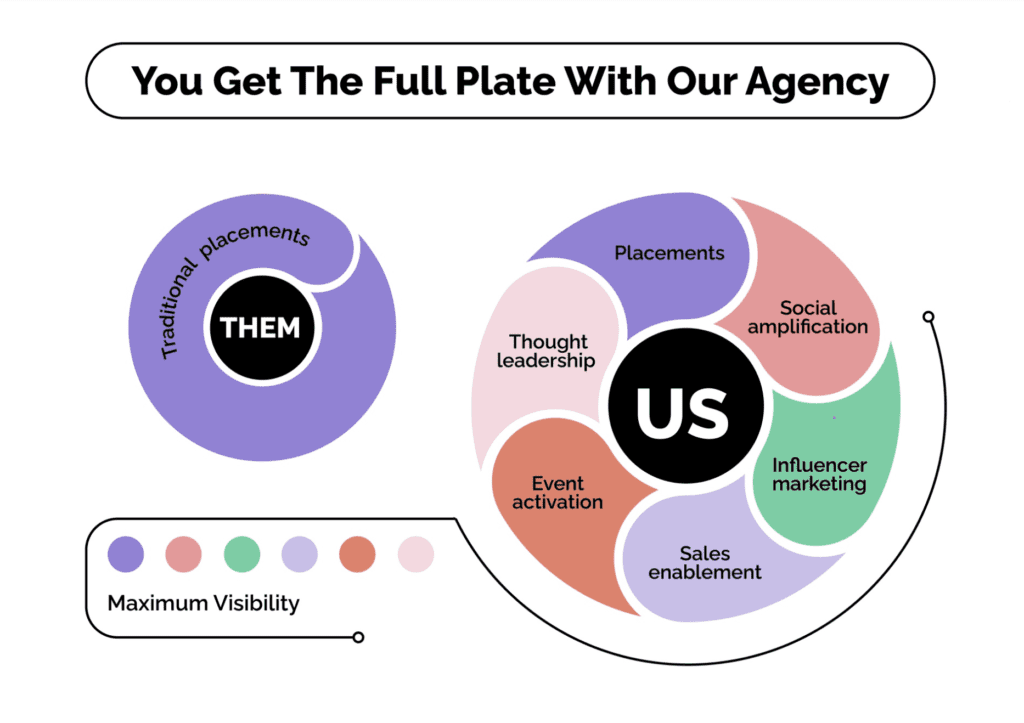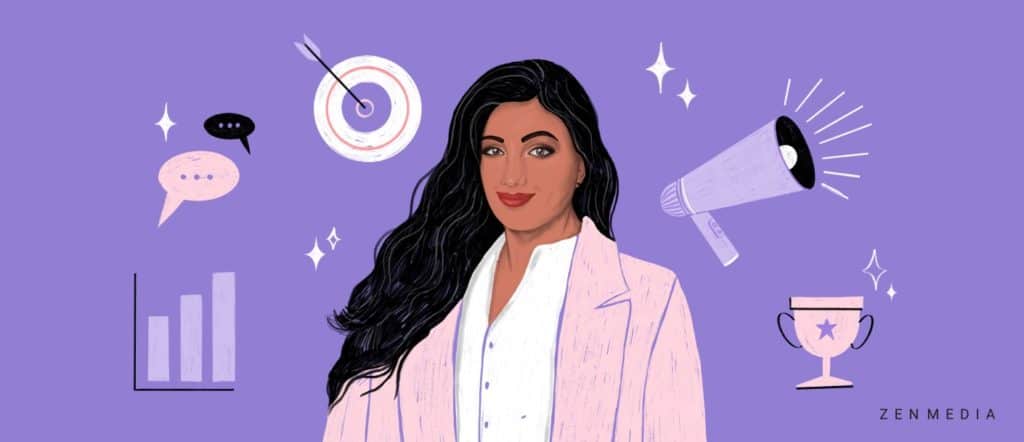Business can be as unpredictable as the weather—you may think you’re prepared, then boom! A storm comes out of nowhere, and you probably didn’t even think to bring an umbrella.
That’s how it feels in marketing, at least.
Founders, CEOs, and other C-suite professionals who know how to harness and embrace their people’s differences are the ones who will weather storms the best. However, entering the market with those differences on full display can be much more difficult than many initially think. Our founder, Shama Hyder, knows this pretty well. After all, she’s a minority woman who built Zen Media from the ground up.
Shama created Zen Media when she had only $1,000 to her name. Today, the company is a global marketing and digital PR agency. But the journey to the top of this industry wasn’t without challenges.
Entrepreneurs who are women and people of color don’t quite fit the description of a “typical businessman.” Nearly half of working-age women make up the global workforce, and of those figures, only 39.1% of businesses in the U.S. are owned by women.
Out of 14 million women-owned businesses, only 4.4 million are owned by women of color. The double-intersectionality of womanhood and being a minority incites multiple nuances of discrimination (yep, even in 2024) and obstacles for aspiring business owners to achieve their dream.
Funding for Women Entrepreneurs is Low
Funding for women-owned businesses remains a major barrier, with men 2.3 times more likely to receive capital investments. Less than 3% of funding goes to companies headed by female CEOs, a number that dramatically falls to 0.2% for female entrepreneurs of color.
Data collected on investment returns for startups indicates companies led by diverse entrepreneurs not only bring in new skills and perspectives but also raise productivity, wages, and returns. In fact, women generate 78 cents of revenue per dollar invested compared to 31 cents per dollar invested in men. This information should move the needle toward embracing more female founders, yet there’s still a long way to go.
What’s Driving the Gender Gap?
Shama broke through the industry with unwavering tenacity and helped to close the gender gap with her woman-owned PR agency. Zen Media even has a female-dominated team—an unintentional “happy little accident,” as Bob Ross would say.
A report conducted by McKinsey found that while women’s representation in leadership roles has grown across industries since 2015—rising from 17% to 28% for C-suite roles—women’s representation in senior leadership positions overall has fallen.
Known as the “broken rung” obstacle, more women are missing out on senior roles because they aren’t getting promoted to that first managerial step as frequently as men. Without these leadership opportunities for women early on, how can we expect more women to rise to the top or start their own businesses?
Related post: The Ultimate Guide to Hiring a PR Agency
Women Leaders are Necessary
These extraordinary gaps show how the business world is missing out on the benefits female business leaders bring to their communities and to the economy. Women-owned organizations cultivate spaces where people can feel heard, seen, and appreciated.
Supporting Women in the Creative Industry
For a marketing and advertising agency like Zen Media, representation also means reflecting our industry’s workforce and responding to its values. For an industry where 69.5% of marketing and advertising professionals are women, wouldn’t fostering a greater sense of inclusion for women across leadership roles make sense?
Of course it would! Working under female leadership generates more diverse and inclusive teams, adds fresh perspectives, enhances business decision-making skills, and embraces conversations to help us attract and retain customers.
These business cultures drive more creativity and space to unleash out-of-the-box thinking and innovation, removing the blanket of outdated, misogynistic politics so that employees can have more freedom to work how they want.
While we’re not saying a company has to be women-owned to give employees the independence they crave, we are saying that women in higher leadership roles have become significant indicators of a diverse and supportive environment. And these impacts trickle down, changing how we interact with customers, stakeholders, and competitors.

Why It Matters
Success Breeds Success
Agencies like Zen Media, with founders like Shama, show us it’s not just a man’s world anymore. When women and minorities see professionals who look and act like them thriving in spaces historically arranged against them, they are more likely to say, “If she can do it, so can I.”
Not only are women finding space at the table, they’re taking their place at the head of it and creating larger tables to accommodate more people. We’re proud to contribute to that success and are excited for a more equitable future.
Zen Media not only supports diversity in terms of race, sex, and background but also values diversity of thought—it’s one of our biggest strengths. Inclusivity is one of the best drivers of market growth and innovation. Diverse teams provide a wealth of seemingly unrelated ideas businesses can tap into to reach new levels. People with diverse backgrounds and perspectives see the world differently and come to different conclusions, driving creativity, innovation, and results.
While the gender gap is 68.4% closed, there’s still room for improvement and inclusion. There is no doubt that women make a positive impact on the economy: There are currently 14 million women-owned businesses in the U.S., generating a staggering $2.3 trillion in revenue. For the marketing industry, changes are slow to come, but they are on the way! Women-owned businesses are catalysts that ignite change and continue to inspire the next generation of business leaders.




